No products in the cart.
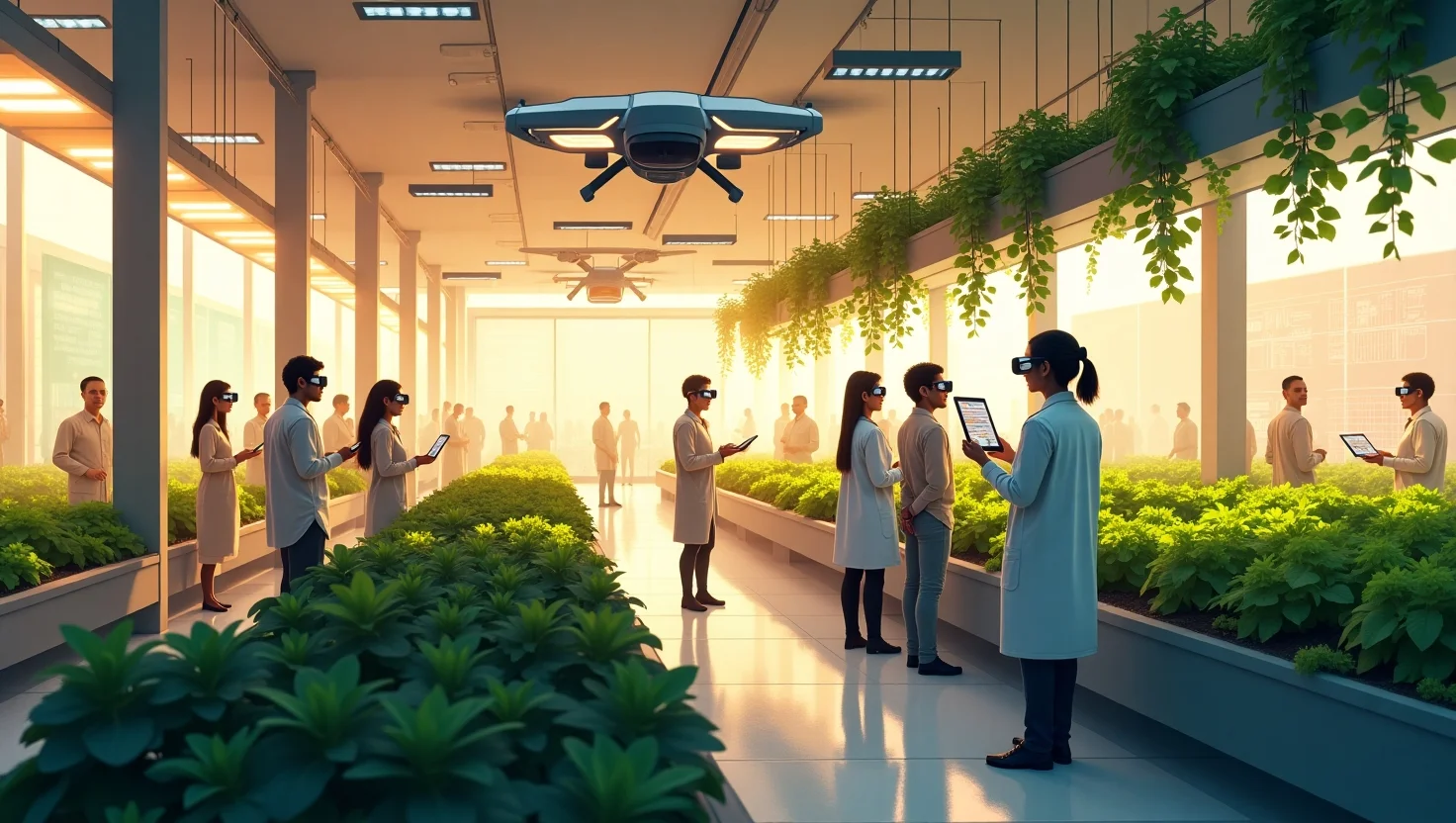
1. Introduction:
In recent years, America’s food supply system has faced unprecedented challenges. From climate change and labor shortages to disrupted distribution networks, the nation’s ability to ensure steady access to affordable, nutritious food is under serious threat. As headlines continue to warn of looming shortages, a pressing question emerges: Can Artificial Intelligence solve America’s food supply crisis?
The crisis isn’t just about empty shelves, it’s about the fragile networks behind the scenes. Our food system, once considered robust, now struggles under mounting pressure. Farmers face unpredictable weather patterns. Supply chains are riddled with inefficiencies. Consumers feel the pinch of rising food prices and reduced availability. Meanwhile, concerns around food security are growing, prompting experts to look toward technology for answers.
Enter AI in agriculture, a powerful force reshaping how we grow, manage, and distribute food. By leveraging AI technology like machine learning, predictive analytics, and automation, farmers and companies can boost efficiency, reduce waste, and create smarter, more resilient supply chains. Tools like precision agriculture enable farmers to make real-time decisions, optimizing everything from soil management to harvest schedules.
But can these innovations truly fix the deep-rooted problems at the heart of America’s food distribution and production systems? In this article, we’ll explore how Artificial Intelligence is transforming agriculture, examine real-world solutions, and determine whether AI can realistically safeguard America’s food future.
2. The Food Supply Crisis in America
America’s food supply chain, once celebrated for its abundance and efficiency, now faces a complex web of challenges. In recent years, events such as the COVID-19 pandemic, extreme weather conditions, and geopolitical disruptions have exposed vulnerabilities in the system. As a result, food insecurity has surged, affecting millions of Americans who struggle to access reliable, affordable nutrition.
Supply chain issues are a major part of the problem. Delays in transportation, labor shortages, and bottlenecks at critical points, from farms to grocery shelves, have caused disruptions across the country. Perishable goods often spoil before reaching consumers, contributing to both food waste and rising prices. Farmers, too, are grappling with agricultural disruption as climate change brings more frequent droughts, floods, and unpredictable growing seasons.
The situation is further complicated by the climate change impact on farming. Longer droughts, increased soil degradation, and new pest pressures make it harder for farmers to maintain consistent yields. Even large-scale industrial farms, which traditionally produced food at massive volumes, are feeling the strain.
Urbanization also plays a subtle but important role. As more agricultural land is lost to development, pressure mounts on remaining farmland to produce more with fewer resources.
In short, America’s food supply system is under siege from multiple directions, and traditional methods are struggling to keep up. These growing challenges highlight the urgent need for innovative solutions, like Artificial Intelligence, to rebuild a more resilient and efficient agricultural future.
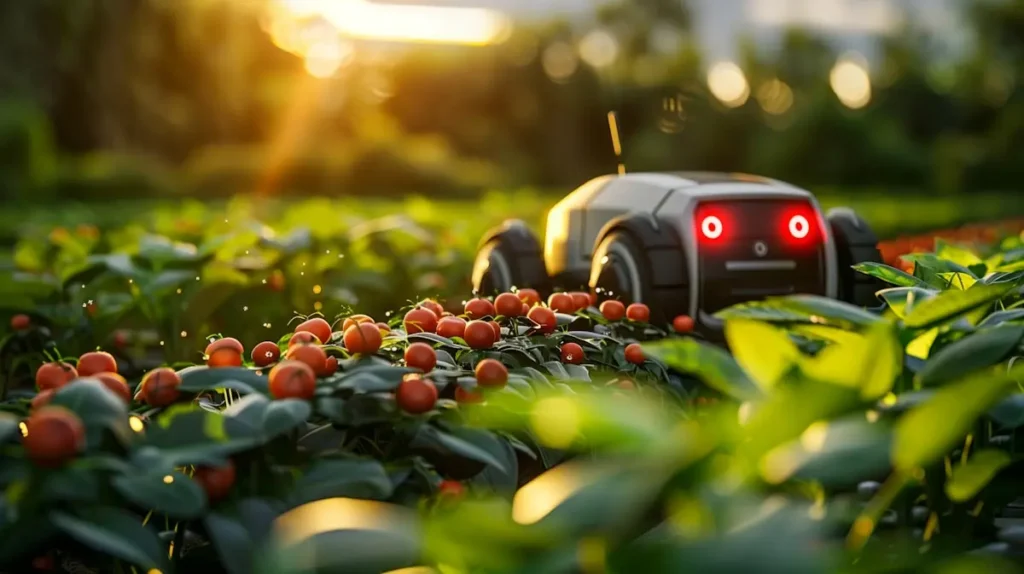
3. What is Artificial Intelligence (AI) and How Can It Help?
At its core, Artificial Intelligence (AI) refers to machines and software systems that can simulate human intelligence, learning, adapting, and solving problems without constant human input. In the context of agriculture, AI is already proving to be a game-changer, offering new ways to predict, optimize, and automate every stage of the food production process.
AI applications in farming cover a broad spectrum. Through advanced machine learning in agriculture, AI can analyze vast amounts of data, from soil composition and weather patterns to crop health, and make highly accurate predictions. Farmers can use this insight to make smarter decisions about planting, fertilizing, and harvesting, ultimately improving yields while conserving precious resources like water and energy.
Meanwhile, AI technologies in agriculture, such as autonomous tractors, drone-based crop monitoring, and robotic harvesting machine,s are reducing the dependence on manual labor, a crucial advantage at a time when the agricultural sector faces severe workforce shortages.
AI also plays a vital role in early detection of plant diseases and pests. Computer vision tools can scan fields in real-time, spotting signs of trouble long before they become visible to the human eye. This proactive approach not only saves crops but also reduces the need for harmful pesticides.
In short, Artificial Intelligence offers an unprecedented opportunity to make farming smarter, faster, and more sustainable. As America grapples with its food supply crisis, the potential for AI to deliver transformative solutions has never been more critical.
4. AI’s Role in Optimizing Food Production
One of the most promising impacts of Artificial Intelligence lies in its ability to optimize food production at every level. Through precision farming and predictive analytics in agriculture, AI enables farmers to maximize output while minimizing waste, a crucial advancement at a time when every acre and every resource counts.
Precision farming uses AI-driven technologies to analyze detailed data from soil sensors, satellite imagery, and weather forecasts. This allows farmers to apply water, fertilizers, and pesticides exactly where and when they are needed, rather than treating entire fields uniformly. The result? Higher crop yields, lower input costs, and a reduced environmental footprint, all critical components of a more sustainable food system.
Moreover, AI-driven farming solutions help farmers anticipate problems before they escalate. Predictive models can forecast disease outbreaks, pest infestations, and even market fluctuations. With this knowledge, growers can adjust planting schedules, select more resilient crop varieties, and better align their harvests with market demand.
In livestock management, AI tools are equally transformative. From monitoring animal health through wearable sensors to optimizing feed efficiency, AI is helping farmers ensure healthier herds and more productive operations.
Importantly, these technologies are becoming more accessible even to small and medium-sized farms, not just large-scale industrial operations. This democratization of AI ensures that the benefits of optimized food production are felt across the entire agricultural landscape.
As America faces mounting challenges to its food supply, AI technology in agriculture offers a beacon of hope, making food production smarter, faster, and more adaptable than ever before.
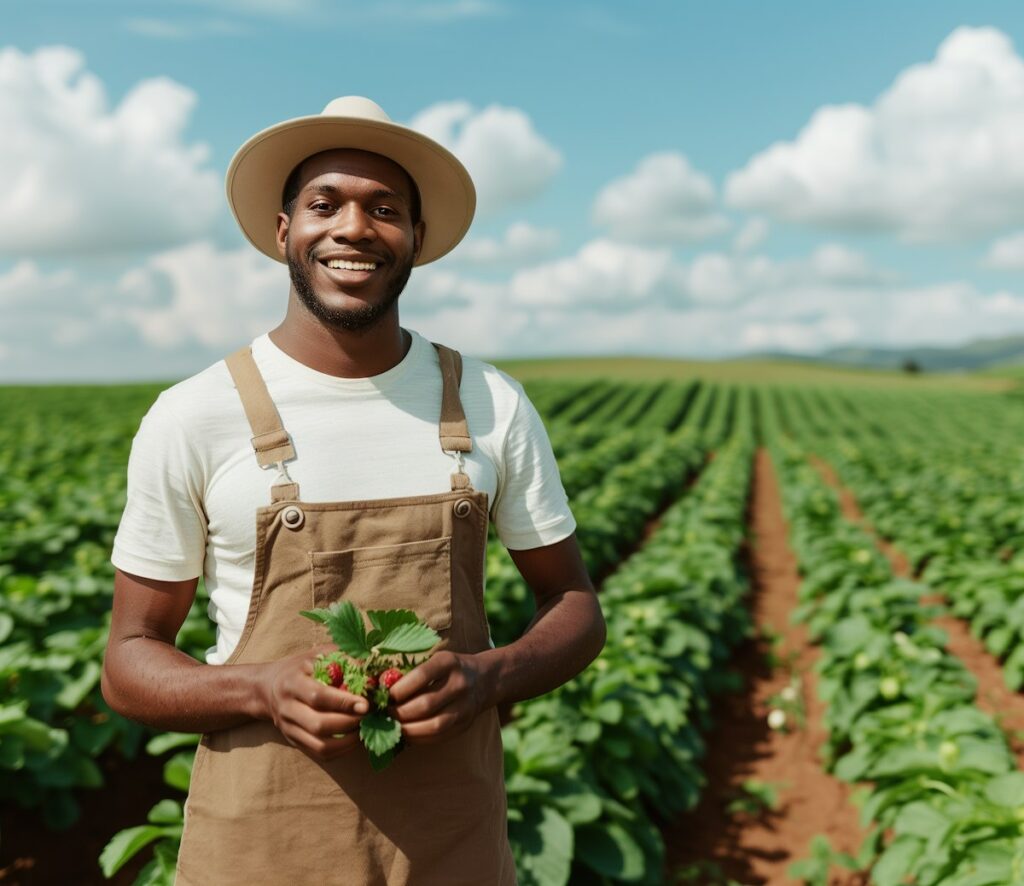
5. AI’s Impact on Food Distribution and Supply Chains
While improving food production is critical, ensuring that food efficiently reaches consumers is equally important. Today, AI in supply chain management is helping tackle some of the biggest bottlenecks in America’s food system, making distribution faster, smarter, and more resilient.
Traditional food supply chains often suffer from inefficiencies, from delayed shipments to poor inventory forecasting, leading to both food waste and lost profits. AI-driven food distribution models use real-time data to predict demand more accurately, optimize shipping routes, and monitor inventory levels. This means fresher food reaches shelves quicker, and the risk of overproduction or spoilage drops dramatically.
One significant innovation is the use of smart logistics powered by AI. These systems analyze traffic patterns, weather forecasts, and transportation availability to chart the most efficient delivery paths. Not only does this cut down on delays, but it also reduces carbon emissions, an important step toward building a more sustainable supply chain.
AI also enhances transparency and traceability within the food supply system. By using blockchain integrated with AI, stakeholders can track a product’s journey from farm to table, identifying weak points and ensuring higher quality control.
By reducing food waste, minimizing delays, and increasing efficiency, AI in food distribution plays a vital role in strengthening America’s food security. As the food crisis continues to evolve, innovative supply chain management strategies powered by AI will be essential in ensuring that no food or effort is wasted.
6. Real-World Examples of AI Addressing the Food Supply Crisis
As Artificial Intelligence continues to make waves in agriculture, there are several notable real-world examples demonstrating its potential to tackle America’s food supply crisis. These AI-powered agriculture innovations are already transforming how food is produced, distributed, and consumed.
One such success story is John Deere’s use of AI in precision farming. The company’s autonomous tractors and AI-guided harvesters help farmers optimize their crop yields by analyzing real-time data from the field. These machines can make adjustments based on factors like soil condition, weather, and crop health, leading to more efficient and sustainable farming practices. This technology not only helps farmers increase productivity but also reduces their environmental impact by minimizing the overuse of water and fertilizers.
In the realm of AI solutions in agriculture, a startup called CropX has developed a soil-sensing technology that uses AI to analyze soil moisture levels, temperature, and other environmental factors. This tool allows farmers to water their crops more efficiently, reducing water waste and improving yields, a game-changer in regions experiencing water scarcity.
Moreover, AI-driven food distribution models are being tested by companies like Lynq Technologies, which uses AI to track and predict demand at food distribution centers. By improving inventory management and route planning, Lynq is reducing waste and ensuring food gets to consumers faster.
These successful AI farming case studies demonstrate that AI is not just a futuristic concept; it’s a present-day tool capable of revolutionizing how we address the food supply crisis, one solution at a time.

7. Challenges and Limitations of AI in Solving the Food Supply Crisis
While Artificial Intelligence holds immense promise in addressing America’s food supply crisis, it’s not without its challenges. Several hurdles need to be overcome for AI to fully realize its potential in transforming agriculture and food distribution.
One of the most significant AI challenges in agriculture is the high cost of implementation. While large agribusinesses may have the resources to invest in AI-driven farming technologies, smaller family farms often struggle to afford these advanced solutions. This technology adoption gap could limit the widespread benefits of AI, particularly in rural communities where small farms are predominant.
Another barrier is the AI limitations related to data quality. AI systems rely heavily on accurate, high-quality data to function effectively. In farming, inconsistent data from soil sensors, weather patterns, and crop conditions can hinder the accuracy of AI predictions. For AI to truly revolutionize agriculture, there must be better integration and standardization of data collection methods across the industry.
Additionally, there’s the issue of technological literacy. Many farmers and agricultural workers may not be familiar with AI or may lack the technical training needed to operate these systems. Overcoming this knowledge gap through education and training is essential for successful AI implementation on a larger scale.
Finally, regulatory concerns and data privacy issues must be addressed. As AI technology becomes more embedded in agriculture, it will require careful regulation to ensure that data usage is ethical and that the technology is accessible to everyone, not just large corporations.
Despite these implementation hurdles, the potential benefits of AI in revolutionizing America’s food supply remain clear. By addressing these challenges, AI can be a critical part of the solution.
8. The Future of AI in America’s Food Supply System
As AI technologies continue to evolve, the future of America’s food supply system is poised for a transformation that could reshape the entire agricultural landscape. With ongoing advancements in AI-driven farming innovations, the potential for AI to address the food crisis grows more promising every day.
Looking ahead, next-generation food systems will likely incorporate even more sophisticated AI tools. For instance, the integration of AI and IoT (Internet of Things) devices could enable real-time monitoring of crop health, water usage, and soil conditions, allowing farmers to make immediate adjustments and predict potential issues before they arise. This level of automation and foresight will help optimize production, conserve resources, and reduce environmental impact.
Another exciting possibility lies in the use of AI for personalized nutrition. With the help of AI, food companies could develop products tailored to individual health needs, preferences, and dietary restrictions. By leveraging data on consumer health and lifestyle, AI could drive the creation of healthier, more sustainable food options, helping address growing concerns about diet-related diseases.
Furthermore, as AI tools become more accessible and affordable, small and medium-sized farms will likely benefit from a more democratized agricultural revolution. Precision farming, powered by AI, will no longer be limited to large agribusinesses; even small farms will be able to harness AI to boost productivity and sustainability.
The future of AI in America’s food supply system promises a more efficient, sustainable, and resilient agricultural landscape, one where technology and nature work hand in hand to ensure that no one goes hungry.
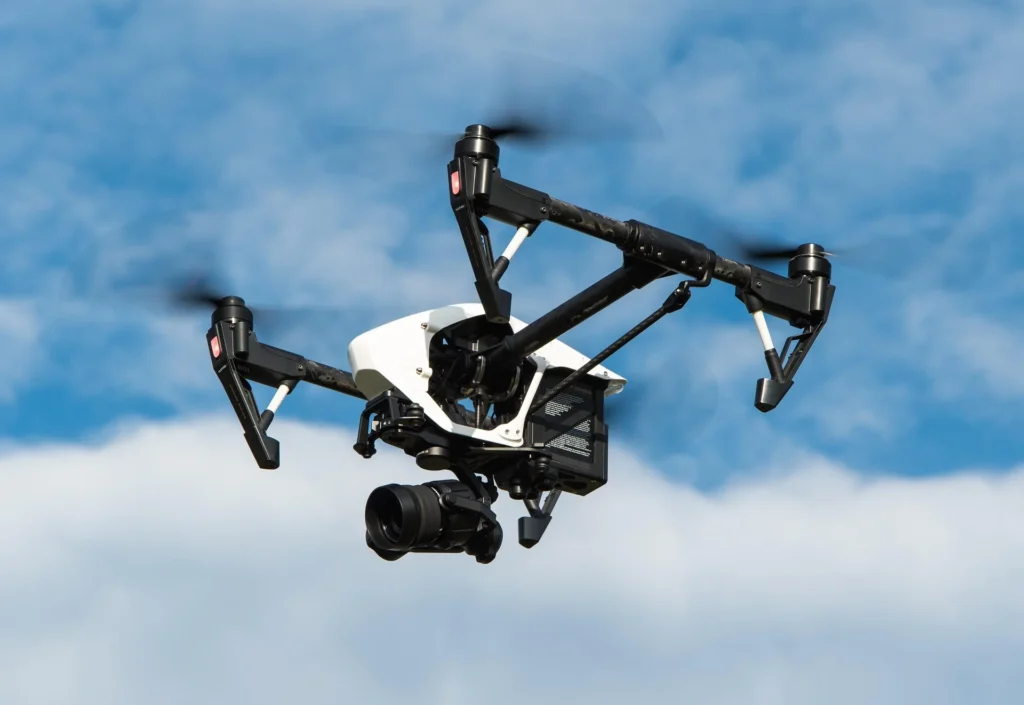
9. Conclusion and Call to Action:
The potential of Artificial Intelligence to solve America’s food supply crisis is undeniable. From optimizing crop production to revolutionizing food distribution, AI offers innovative solutions that can help build a more sustainable, efficient, and resilient food system. As we’ve seen, AI technologies in agriculture are already making significant strides, improving food security, reducing waste, and enhancing productivity.
However, to fully unlock AI’s potential, it’s crucial to overcome the challenges of cost, data quality, and technological adoption. Smaller farms, in particular, need access to affordable AI tools and proper training to take full advantage of the technologies transforming the industry. Regulatory frameworks must also ensure that AI is used ethically and equitably across the sector.
The future of food in America depends on our ability to embrace and harness AI-driven innovations that can adapt to the changing needs of our population and the environment. It’s time for policymakers, farmers, and tech developers to collaborate in creating an inclusive AI ecosystem that benefits all, from large agribusinesses to family-owned farms.
If you’re a farmer, tech developer, or policymaker, now is the time to explore AI solutions that can help tackle the food supply crisis. For consumers, supporting sustainable farming practices and advocating for AI-driven agriculture can help pave the way for a brighter, more food-secure future.
Let’s continue the conversation. How can you contribute to advancing AI in agriculture and solving the food supply crisis?
FAQs:
Q1. How can AI help solve America’s food supply crisis?
AI can help solve the food supply crisis by optimizing crop production, reducing food waste, improving food distribution, and increasing the efficiency of farming operations. Technologies like precision farming, predictive analytics, and AI-driven supply chain management ensure that resources are used more sustainably, which is essential for feeding a growing population.
Q2. What are the biggest challenges of implementing AI in agriculture?
The main challenges of implementing AI in agriculture include high initial costs, limited access to AI tools for smaller farms, inconsistent data quality, and a knowledge gap among farmers about new technologies. Overcoming these barriers is key to ensuring AI’s widespread adoption and success in farming.
Q3. Is AI technology accessible to small farmers?
While large agribusinesses are leading the way in adopting AI, small and medium-sized farms are increasingly gaining access to affordable AI tools. Advances in technology are making AI more accessible, and new initiatives are focused on providing education and support to help small farmers adopt AI-driven solutions.
Q4. How does AI reduce food waste in supply chains?
AI reduces food waste in supply chains by optimizing inventory management, improving forecasting accuracy, and enhancing logistics efficiency. With real-time data, AI can predict demand more accurately, streamline transportation routes, and prevent overproduction, all of which reduce spoilage and waste.
Q5. What is the future of AI in America’s food system?
The future of AI in America’s food system is promising. AI will likely continue to improve food production and distribution, helping farmers adapt to challenges like climate change and supply chain disruptions. Innovations in AI-powered precision farming, autonomous machines, and smart logistics will play a crucial role in building a more sustainable and efficient food system.
Related Articles
Crop Management
Can AI Predict Market Prices for Farmers? Here’s What You Need to Know
1. Introduction: Agricultural markets are notoriously unpredictable. One season, a bumper crop...
Crop Management
AI-Powered Crop Spraying Drones: Precision Agriculture in Action
1. Introduction: Farming has always been a race against time, pests, and...
Crop Management
Top AI Farming Startups in the U.S. to Watch in 2025
1. Introduction: Farming in the United States is undergoing a seismic shift,...
Crop Management
Top 5 Ways U.S. Farmers Are Using AI Drones to Boost Yields in 2025
1. Introduction: In 2025, the American agricultural landscape is undergoing a transformation...
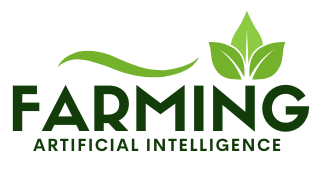
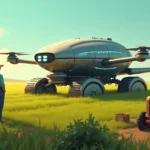
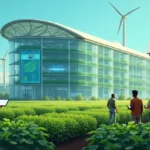
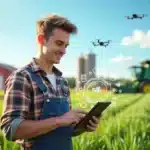

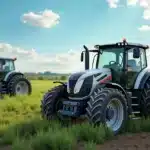

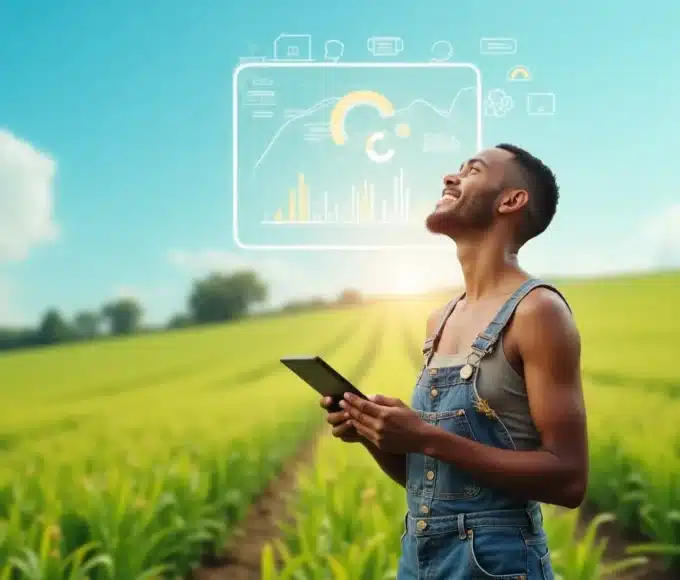
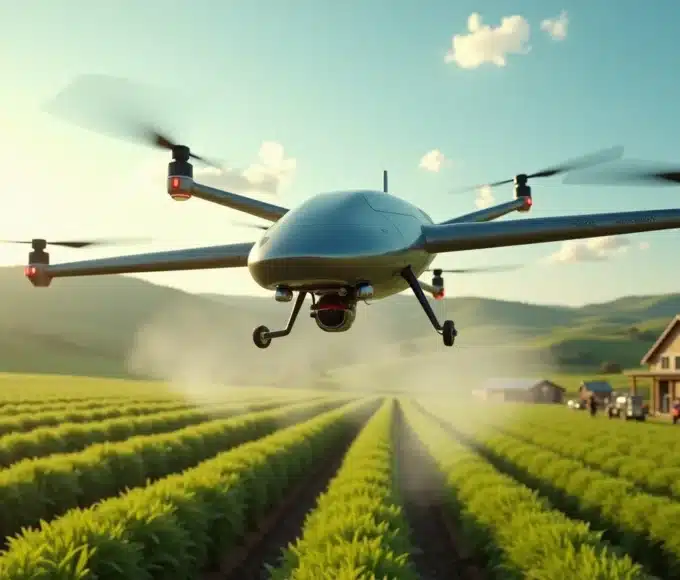
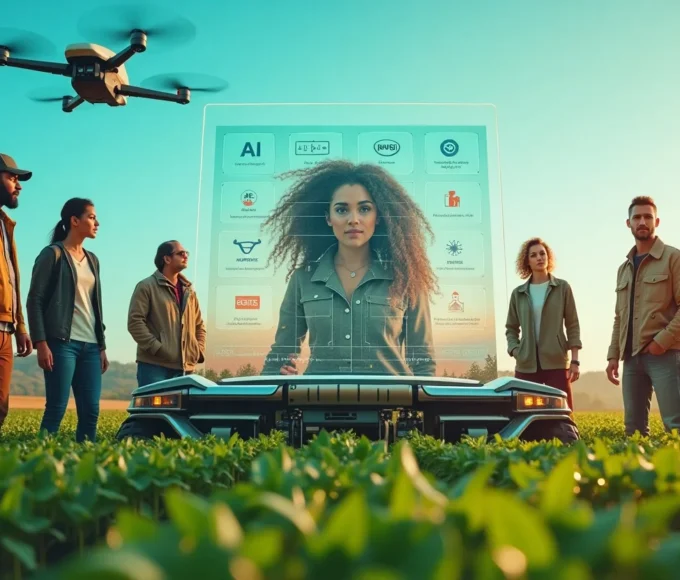
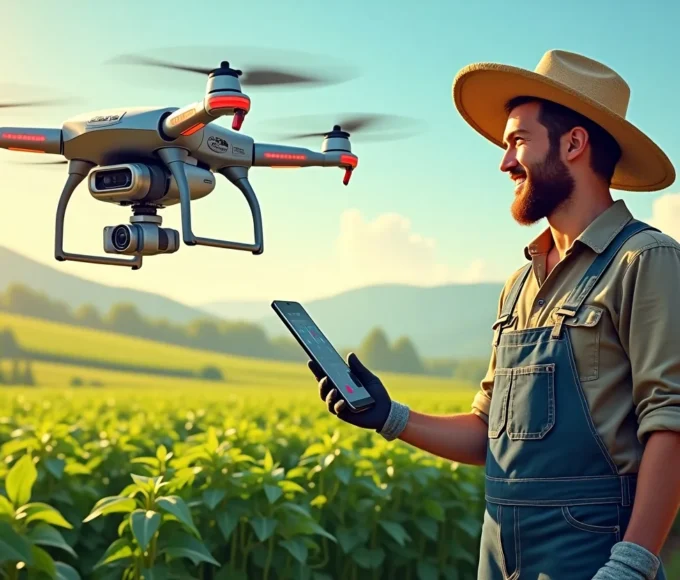
Leave a comment